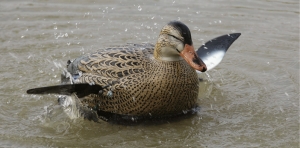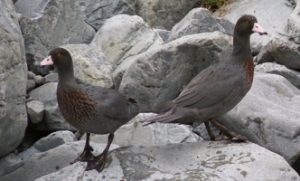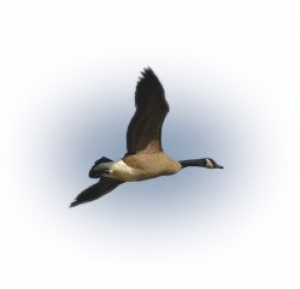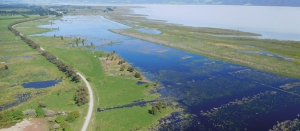Super User
That time of year – again
No 1 on the list should be the game bird hunting licence. Check your bank account, the full season licence has gone up one dollar. That’s right $91 this season.
The camo gear, the special maimais, and even the decoys mean the ducks are duped into thinking there are real ducks on the water.
Special paint on the decoy makes them look lifelike. Some decoys are made to look as if they are sleeping or feeding.
There are also decoys that paddle and splash the water. Then there are electronic callers. The ducks don’t really stand a chance…It is just as well there is a bag limit.
• Game bird hunting licence, regulations booklet.
• Carry firearms licence at all times.
• Confirm access with landowners.
• Get permit to hunt on Fish & Game and DOC land. • Fix the maimai: leaks, rotten boards seating etc.
• Clean decoys.
• Vaccinations and worming for the dog.
• Check regulations for the region you are hunting in. • Hunt ethically and responsibly.
• Don’t drink and hunt. Alcohol impairs judgement.
• Be a tidy kiwi – take your rubbish when you leave.
• Shotgun in tip-top condition. Check sighting. • Treat every firearm as loaded.
• Store firearms and ammunition safely.
• Always point firearms in a safe direction.
• Load only when ready to fire.
• Always, always - identify your target.
• Check the firing zone.
Whio Forever
Whio Forever wins green ribbon award
The Whio Forever recovery programme won the Ministry for the Environment Green Ribbon Award this year for protecting our biodiversity.
The Awards recognise outstanding contributions of individuals, organisations,
businesses and communities to protecting and enhancing New Zealand’s environment.
The National Whio Recovery Programme is a partnership between Genesis Energy, the Department of Conservation, Forest and Bird and the Central North Island Blue Duck Charitable Trust. It is focused on the protection and recovery of the whio, a threatened native bird and supports whio security and recovery
sites across the country.
Genesis Energy Environmental Manager, Bonny Lawrence and the Department of Conservation Whio Recovery Group Leader, Andrew Glaser accepted the award from the department’s Director General, Lou Sanson.
eight security sites Receiving the award DOC’s Whio Recovery Group Leader Andrew Glaser said it was exciting the Whio Forever partnership was
acknowledged, as the Awards recognised a wide range of amazing environmental initiatives around New Zealand.
Andy also acknowledged the many whio practitioners and community supporters
who have contributed to the success of the programme.
The whio recovery programme also funds WHIONE projects (Whio Operation Nest Egg) that allows wild whio populations to be boosted with ducklings hatched and raised in safe havens, then released into the wild.
Million dollar project for Pukaha Mt Bruce
This grant has kick started fundraising for the $1.1 million project designed to provide visitors to Pukaha with an exciting experience – allowing them to get closer to native bird life and flora and fauna.
Construction of the project is due to commence in May 2015 with completion expected in November 2015.
This is a substantial grant from Trust House Foundation who have long been a key supporter of Pukaha Mount Bruce.
This walk through aviary will give visitors an amazing experience, providing a greater understanding of New Zealand’s precious flora and fauna and how we, as individuals and collectively can play our part in its protection.
The proposed aviary has been designed by the Pukaha Mount Bruce Board in collaboration with Fabric Structures Ltd, who built The Cloud in Auckland Viaduct; Boffa Miskall Landscape Architects and Rigg Zschokke Ltd.
Spring arrival at Pukaha
Staff are also keeping a close eye on five male kiwi who are sitting on eggs in the forest and hoped to bring in the first kiwi chick of the season. While they had intended to bring it in as an egg and hatch it in their nursery, the burrow was too deep for the egg to be safely taken out without damaging the burrow.
Keep right up-to-date with all new hatchings and events on the facebook page - www.facebook.com/.
Protecting our kakī
As a ranger based in Twizel the main part of my job is supporting the Kakī Recovery Programme.
population in the wild and ensure this special bird is not lost for future generations.
As part of a small team of four permanent and a few seasonal staff, my responsibilities involve managing kakī in the wild. This includes counting how many adults are out there; traipsing up and down numerous braided rivers in the Mackenzie Basin searching for breeding pairs; observing and interpreting behaviour; finding their nests; reading leg bands and collecting eggs fromthe wild to bring back to the captive rearing facility in Twizel.
At 3–9 months they are released into the wild. Rearing them in captivity significantly increases their chances of survival by
preventing predation when they are most vulnerable and it also gets them through their first winter, which can be tough for young birds in the wild.
Maori Bay track
Volunteers have been working on the Maori Bay track at Tawharanui. Many Flight readers would possibly be going fishing or bird watching on this southern coastline of the Tokata Peninsular so they might like to see what the track looks like now! Loose metal will be added once the drier weather occurs.
Roger Williams has been leading this mid-week volunteer group working on the Maori Bay Track which is about 30 minutes walk from the Anchor Bay carpark. On the way you walk through the Ecology Bush and should see/hear Brown Teal, Saddlebacks, Robins, Keruru, Tui, Bellbirds and may even see Kaka and Kakariki. The track upgrade should be completed by the end of September.
Pateke success at Tawharanui
Pateke success at Tawharanui
Matt Maitland
Senior Ranger Open Sanctuaries
Northern Regional Parks
To save Pateke
To save Pateke Knowledge, care and endurance
Positive aspects of the recovery programme
1. Flock mating/natural pairing of Pateke was the key to the highly successful captive breeding programme – together with the enthusiasm of participants. Flock mating is now being used in a number of rare waterfowl recovery programmes.
2. Captive reared brown teal adapt readily to a wild environment, natural or created.
3. In Northland captive reared Pateke released at Mimiwhangata, Whananaki and Purerua between 1986-1992 survived for long periods and produced offspring – in spite of little predator control, with predator control Pateke are doing well.
4. Where predator control programmes have been in operation at suitably selected quality release sites in Northland (and more recently on the Coromandel) Pateke have survived very well and have successfully reared many progeny.
5. In the absence of waterfowl hunting and predators, captive reared brown teal released into quality Pateke habitat have few problems adapting to the wild.
6. A gradual transition from captive bred to wild, using pre-release pens and a supplementary diet was successful.
7. Brown teal are by far the most predator vulnerable species amongst all species of waterfowl
8. Captive reared teal released on off-shore islands that have suitable predator-free habitat survive and breed well.
9. When the release of captive reared Pateke into quality habitat is coupledwith predator control, a pre-release aviary, supplementary feeding and with the site having an adequate area for a significant population increase (such as at: Mimiwhangata, Purerua and Port Charles), the recovery process is a very simple one!
10. Between 1969-1992 it was learnt that releasing captive reared Pateke at a large number of unsuitable and disconnected habitats, with 35 different sites being used, achieved little, was counterproductive and very expensive.
11. Since the 2000 Audit of the recovery programme steady progress has been made towards increasing the wild populations of Pateke.
Starting in 2009 a150 captive reared Pateke have been released in Fiordland, but it is too early to predict the outcome of this programme.
Pateke were once widespread throughout Fiordland, the habitat is still excellent and with ongoing predator control a South Island population could be re-established.
The 2000 audit of the pateke recovery programme
Recovery mode
The recovery on the Coromandel clearly endorses the philosophy that provided Pateke have suitable habitat, protection from predators and ongoing management support they will survive and breed very successfully, with the success on the Coromandel possibly being the most rapid recovery of an endangered duck.
Negative aspects of Recovery programme
Between 1975 and 2002 there were 2000 Pateke released into mainland wetland sites, with all releases failing to slow the species decline, largely due to:
• Lack of continuity amongst Pateke management personnel and others directly involved in planning the survival of Pateke.
• Sites used were poorly selected.
• No pre-release study to see if there was an adequate food source.
• No pre-release study to determine whether the habitat was suitable.
• Little predator control and little knowledge of the subject.
• Little understanding about the main predators to control/ eliminate.
• Until early 2000 no sites had ongoing predator control.
• Many sites were out on a limb, with no wild Pateke in the area. • Many sites had no adjacent wetlands for progeny expansion or to which adults could escape.
• Many sites had no loafing facilities or aerial protection.
• Insufficient supplementary feeding of released birds. The value of this is recorded in a paper published in 2013.
• Pre-release aviaries rarely used.
• Competing waterfowl were present.
• Hybridisation with mallards and grey teal occurred.
• Instant dispersal of released birds occurred.
• A lack of ongoing support.
• A lack of monitoring of released birds.
Winter shorebird survey
Winter shorebird survey results at Lake Wairarapa
species counts.
is exceedingly unusual for this site. Red-billed gulls are extremely rare visitors to Lake Wairarapa, having been reported only a handful of times previously (11 birds in February 1948, “irregularly” between 1982-1983, 2 birds in April 1992 and 1 bird in February 2012).
Feral Goose
74
38
15
2174
years. A number of species appear to have increased in abundance over the intervening time, among them NZ dabchick, black shag, little black shag, little shag, black-fronted dotterel and black billed gull. A smaller number of species appeared to have declined in abundance over the same period, including SI pied oystercatcher, pied stilt and spur-winged plover.
1985-1994
2011-2014
to allow them to detect future changes and to re-examine the relationship between shorebird abundance and water levels). You might be interested to know the data from these surveys have recently been put to a variety of other
uses, including:
• To provide quantitative evidence in support of an application to have the Wairarapa Moana wetlands recognised as a “wetland of international importance” under the Ramsar Convention.
• To provide evidence to support the Wairarapa Moana Wetlands (together with
the Ruamahanga River) being listed as an “Important Bird Area” under Birdlife
International’s global IBA programme.
• To form part of our flood protection department’s programme for monitoring
the health of riverbed-dependent bird populations on rivers affected by flood
protection activities (large proportions of the regional populations of several riverbed-dependent bird species overwinter at Lake Wairarapa).
• To provide regional population estimates for a number of shorebird species used for the development of a regional threat classification system for birds of the Wellington Region.
• And lastly, data collected during these surveys are combined with data compiled from other key shorebird sites around NZ to provide estimates of the national population sizes of a number of NZ’s shorebird species. These national
population estimates are in turn put to a variety of uses, including a regular review of national threat classification rankings and ongoing monitoring of the population health of Arctic-breeding migrants using the East Asian/Australasian Flyway, a major avian migration route stretching from Alaska and Siberia in the north to NZ and Australia in the south.
Nikki McArthur
Environmental Scientist
Greater Wellington Regional Council
Planting continues at Wairio wetland
The water was quite high at Stage 4 so there are still some spots to be planted.
We still have 400 suitable plants at Norfolk Road Nursery and Don Bell will arrange for them to be planted when the water recedes. He will also plant about 100 Totara and
We did not do this during the July planting due to time constraints – priority was on getting the trees in the ground.
Jim Law
Predator control essential Boggy Pond/Wairio Trapping Update
not able to be serviced.
Steve regularly services traps in the areas we monitor. In July, almost 12 months since the first Timms traps went on the ground at Boggy Pond/Wairio Wetlands he caught 3 cats, 4 ferrets, 2 weasels, 4 rats, 12 hedgehogs, 4 mice, 6 magpies and 1 harrier hawk.
For the year total predators removed from this job are; 20 cats, 43 ferrets, 1 stoat, 13 weasels, 159 hedgehogs, 52 rats, 29 mice, 10 magpies, 2 harrier hawks and 1 rabbit.
Steve will have commence fortnightly servicing of the traps at both of these
operations until breeding season is finished around the end of February.
“As a matter of interest we have already caught 14 ferrets at the Boggy/Wairio wetlands for August and September so it just shows we cannot take the handbrake off regular predator control any time soon,” said Steve.







